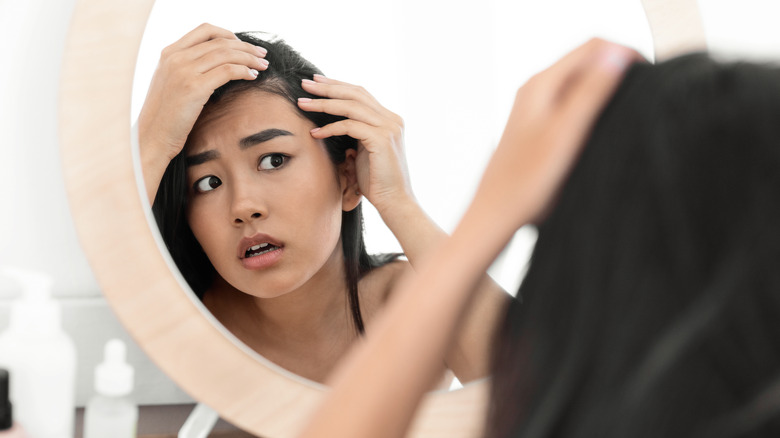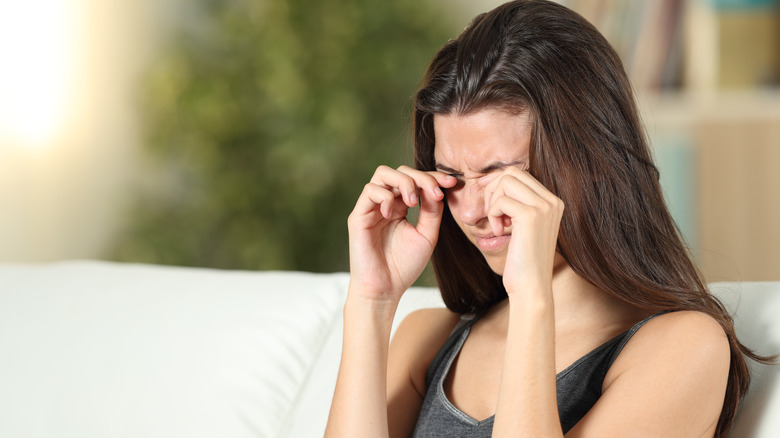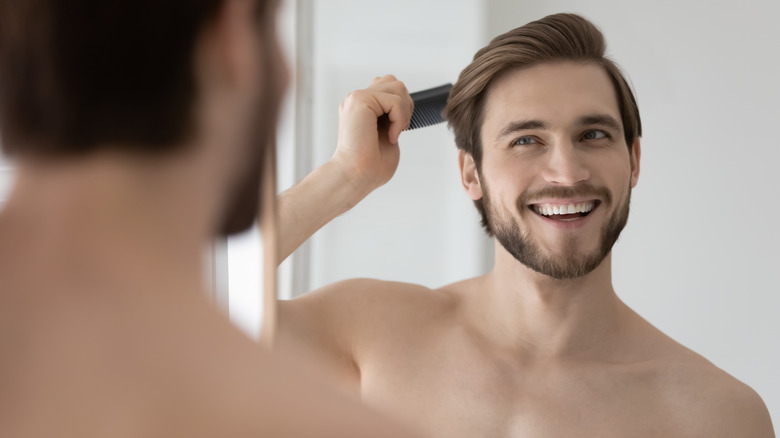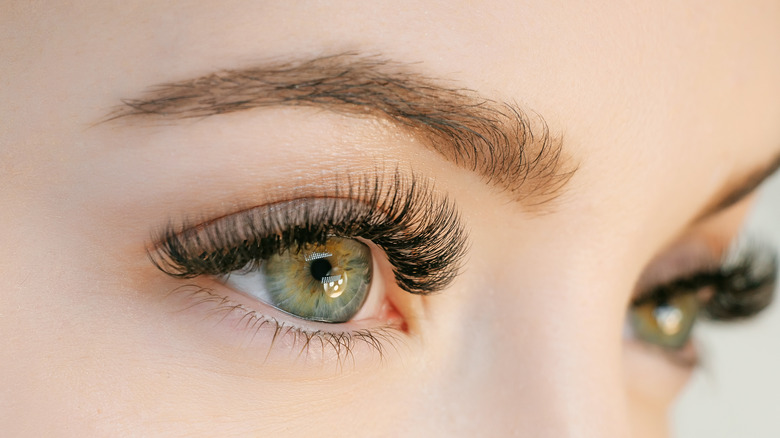Can You Use Latisse On Your Scalp?
Most of us have seen ads for Latisse, the eyelash growing serum that promises to enhance your lids with fringe they may be lacking. According to the Mayo Clinic, the active ingredient in this medication is bimatoprost, and is approved by the Food & Drug Administration to work for its intended use.
If you want your eyelashes to grow or get thicker, Latisse may be for you. But when it comes to an unintended use of the product, like thickening hair on the scalp, can you count on Latisse to work its magic?
Well, first consider that the product is only effective on the upper eyelashes — indeed, users are cautioned not to apply Latisse on their lower lash line. Why? According to the drugmaker's website, a person may end up experiencing hair growth that is "outside the treatment area." Aha! The scalp would certainly be considered "outside the treatment area," as well as a spot on the body many people desire thicker hair.
So, what's the worst that could happen? Well, first, consider the side effects of using Latisse.
Latisse does not have super serious side effects
Side effects are hugely important to consider when taking any prescription medication, and Latisse is no exception. The good news is that for the most part, you aren't dealing with anything too scary when it comes to side effects — unlike some of the things you hear on commercials, and seem almost worse than the original problem!
In this case, Latisse trials noted eye irritation and itching in a small percentage of people, which seems like a small price to pay if you really want to jumpstart hair growth. In rare cases, an eye infection happened, and again, hair growth in unintended areas of the body is possible if the serum drips onto the skin. WebMD notes that darkening of the eyelid and vision changes like blurred vision are also possible.
With all of that considered, patients should also know that Latisse is meant to be applied in very small amounts, and importantly, gradually. So no, your lashes won't sprout out overnight, with a month to four months being a realistic time horizon for patients to notice an improvement.
What if you, ahem, brush a bit on your scalp in addition to your upper eyelids?
Latisse's technology hasn't led to a scalp product specifically
For over a decade people have been buzzing about using Latisse on the scalp. As Dr. Alan Bauman reasoned to Today in 2011, "Patients who were using it for eyelashes sometimes have eyebrow problems, so it's a short hop to the eyebrows. So, of course, if it was working there, too — from the eyebrows, it's just a short hop to the hairline."
It wasn't just wishful thinking either. In fact, as far back as 2009, Latisse's parent company, Allergan, was exploring the development of a product like its eyelash growth medicine — but for the head specifically (via CBS News).
But years later, it seems the industry is still chatting about the possibility of a product for baldness hitting the market (via Biostock). Happily, Allergan has seemingly invested a ton of money in research — but no dice yet.
So, can patients use Latisse in the meantime?
Some people say Latisse works for scalp growth
According to the Foundation for Hair Restoration, the FDA still has not approved Latisse for use on the scalp, a fact which must be stated at the outset. However, the site also notes that the lash-growing medication does also enhance hair on the scalp for some people who've tried it.
As GQ points out, the lack of treatments out there for people who are experiencing hair loss and thinning makes Latisse an attractive option. Healthline reports that one option, Rogaine, only works if you are starting to experience hair loss — not if you're already bald, and the product is not effective for everyone.
Meanwhile, Propecia, a pill, has too many side effects for some to continue using it, including sexual dysfunction and depression. However, both Rogaine and Propecia are FDA-approved for use on the scalp, while reminder: Latisse is not. And that fact is not the only reason you may want to skip using Latisse on your lid.
There are reasons why Latisse for the scalp just doesn't work
Just as the Foundation for Hair Restoration points out that Latisse did trigger hair growth for some folks who dared to give it a go, the site also notes that you can't expect the same result as on the lash line.
Why? Simply because your eye skin is very thin, while the scalp is quite thick — and as previously stated, Latisse is meant to be applied in a very small dose — just one drop. Such a small amount of the product on thicker skin won't produce the result desired for many patients. The cost of Latisse to treat a much larger area of the body is a barrier for many people, with the Foundation noting you'd need a lot more of the medication for the scalp than the lash line.
The concentration of bimatoprost in the serum also wouldn't be high enough to move the needle when it comes to hair growth on the noggin. You also have to consider that Latisse only works while the product is in use, so if you stop applying it, the hair growth it stimulates stops as well (via Mayo Clinic).
The bottom line for your top
At the end of the day, unfortunately, Latisse is not a magic potion for hair growth on the head. Like Rogaine, Latisse is not even going to produce new hair. Instead, it can only potentially enhance thinning hair (via GQ). Indeed, realistically, you can't expect the product to lead to lush locks out of nowhere.
And it must be stressed again that the product is not intended for use on the head at all. But that doesn't mean people haven't tried it, with some believing it works, and no serious side effects seem to have been reported — at least not when compared to Propecia.
Ultimately, the best news available on the topic of using Latisse on the scalp is that the medication behind the product offers promise for future innovation for other hair-challenged areas of the body. We may have to wait a bit longer before a Latisse-like medication meant for the mug is mainstream.





